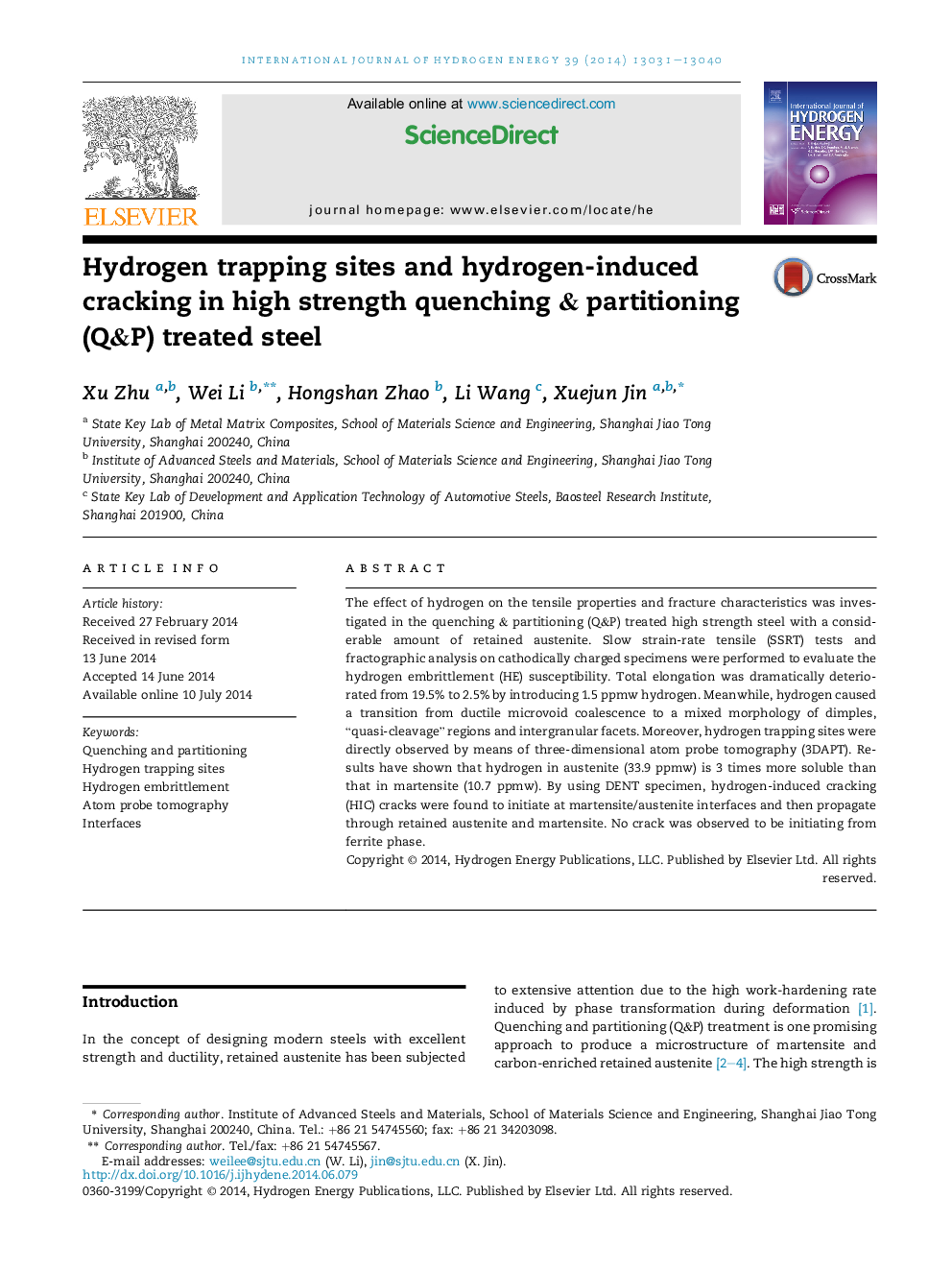| Article ID | Journal | Published Year | Pages | File Type |
|---|---|---|---|---|
| 7718873 | International Journal of Hydrogen Energy | 2014 | 10 Pages |
Abstract
The effect of hydrogen on the tensile properties and fracture characteristics was investigated in the quenching & partitioning (Q&P) treated high strength steel with a considerable amount of retained austenite. Slow strain-rate tensile (SSRT) tests and fractographic analysis on cathodically charged specimens were performed to evaluate the hydrogen embrittlement (HE) susceptibility. Total elongation was dramatically deteriorated from 19.5% to 2.5% by introducing 1.5Â ppmw hydrogen. Meanwhile, hydrogen caused a transition from ductile microvoid coalescence to a mixed morphology of dimples, “quasi-cleavage” regions and intergranular facets. Moreover, hydrogen trapping sites were directly observed by means of three-dimensional atom probe tomography (3DAPT). Results have shown that hydrogen in austenite (33.9Â ppmw) is 3 times more soluble than that in martensite (10.7Â ppmw). By using DENT specimen, hydrogen-induced cracking (HIC) cracks were found to initiate at martensite/austenite interfaces and then propagate through retained austenite and martensite. No crack was observed to be initiating from ferrite phase.
Related Topics
Physical Sciences and Engineering
Chemistry
Electrochemistry
Authors
Xu Zhu, Wei Li, Hongshan Zhao, Li Wang, Xuejun Jin,
